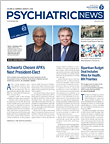The prevalence of fetal alcohol spectrum disorder (FASD) in the United States may be much higher than previous estimates have indicated. Researchers reported in the February 6 JAMA that in four communities they studied, as much as 1.1 percent to 5 percent of first-grade children were affected, and those were conservative estimates.
Moreover, only a small percentage of children identified as likely having FASD had ever received a diagnosis. The findings highlight the importance of identifying women of child-bearing age who may be at risk for alcohol abuse and communicating the risks of fetal alcohol syndrome.
“These prevalence estimates are consistent with mounting evidence that harmful fetal alcohol exposure is common in the United States today,” Philip A. May, Ph.D., of the University of North Carolina at Chapel Hill and colleagues wrote. They “may represent more accurate U.S. prevalence estimates than previous studies but may not be generalizable to all communities.”
Using “active case ascertainment”—an especially rigorous study method for case identification—May and acolleagues sampled more than 6,000 first graders in four communities: the Rocky Mountain, Midwestern, Southeastern, and Pacific Southwestern regions. The researchers systematically assessed the children in the four domains relevant to FASD: physical growth, dysmorphic features, neurodevelopment, and prenatal exposure. Prenatal exposure was assessed through maternal interviews conducted by trained study staff in person or over the telephone.
Of 6,639 children selected for participation (out of a first-grade population in the four regions of more than 13,000), 222 cases of FASD were identified.
The researchers derived a conservative estimate (which assumed that those children not included in the final sample did not have FASD) of 11.3 per 1,000 children (about 1.1 percent) in one Midwestern sample to a high of 50 per 1,000 (5 percent) in one Rocky Mountain sample. A second estimate (in which those children not sampled were assumed to have the same rate of FASD as the sampled population) ranged from 31 children per 1,000 (3.1 percent) to 98.5 per 1,000 (about 9.9 percent).
Importantly, they said only two of the 222 children classified with a FASD had been diagnosed previously with it, although many parents and guardians were aware of the learning and behavioral challenges facing their children.
The authors noted that these findings emerge in the context of evidence suggesting that drinking among young women is on the rise. For instance, they cited the National Epidemiologic Survey of Alcohol and Related Conditions, which documented an increase in alcohol use among women between the 2001-2002 and 2012-2013 survey years. In particular, consumption of four or more standard drinks at least weekly in the past 12 months increased by 14 percent to 37 percent in women aged 18 through 44 years, according to that survey.
Community psychiatrist Carl Bell, M.D., who reviewed the
JAMA report for
Psychiatric News, said he believes that in some lower socioeconomic communities, the prevalence of FASD may be even higher than the upper-range estimates derived by May and colleagues. In an analysis of school-aged children on the south side of Chicago, also using case ascertainment methods, Bell found that two-thirds to three-fourths of all youth sampled had symptoms that could be attributed to fetal alcohol exposure (
Psychiatric News, February 2).
Chicago’s South Side is sometimes called a “food desert,” referring to the scarcity of groceries selling fruits, vegetables, and legumes. Bell said a better name might be “alcohol swamp,” noting that in some areas there are as many as three liquor stores within a half-mile.
Bell said in his analysis that many women may have been drinking socially for weeks before they became aware that they were pregnant.
In a chapter in a recent National Academy of Medicine report, “Perspectives on Health Equity and Social Determinants of Health,” Bell drew attention to the problem of fetal alcohol syndrome and urged widespread use of supplementary choline for pregnant women. He cites the work of Robert Freedman, M.D., editor of AJP, and colleagues showing that prenatal dietary supplementation with choline—by increasing activation of the α7-nicotinic acetylcholine receptor—may alter the development of behavioral problems in early childhood.
“As the first point of contact, physicians and other health care professionals have an important role in prevention and identification,” Shannon Lange, M.P.H., Jürgen Rehm, Ph.D., and Svetlana Popova, Ph.D., wrote in an editorial accompanying the article by May and colleagues. “Special attention should be paid to young women who may engage in binge drinking because it can lead to unprotected sex and unplanned pregnancy.” ■
“Prevalence of Fetal Alcohol Spectrum Disorders in 4 U.S. Communities” can be accessed
here.



